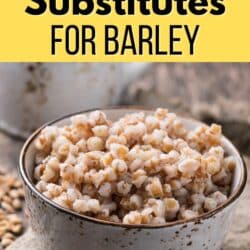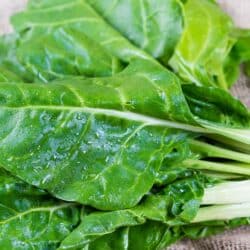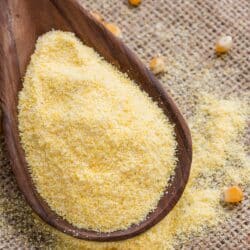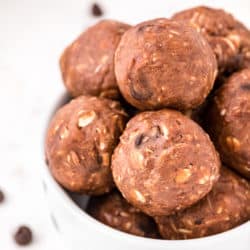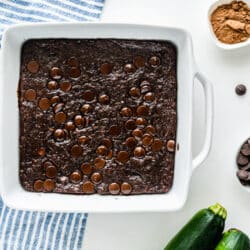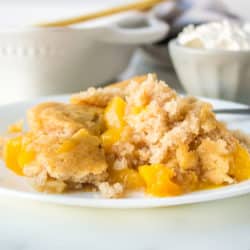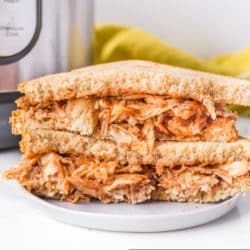8 Substitutes for Barley (Gluten-Free Options)
If you need barley in a recipe, but don’t have any on hand, you’re in luck! There are many great substitutes that can give your food that same delicious flavor, nutrition, and texture. Here are some substitutes for barley including quinoa, farro, brown rice, bulgur wheat, pearl couscous, freekeh, millet, and buckwheat.
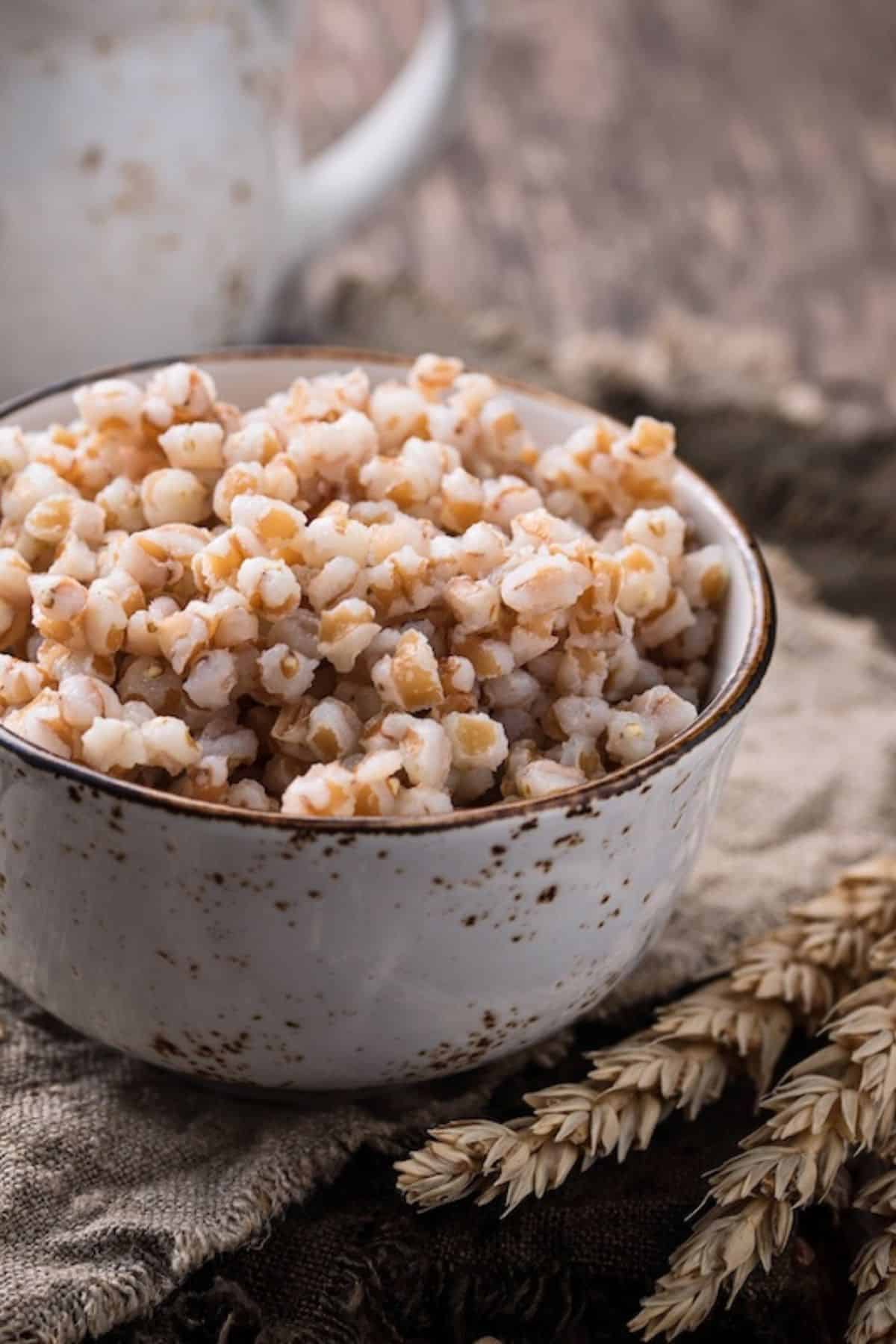
Nutritious barley is a versatile grain that can be used in all sorts of dishes, from soups to sides! It has been cultivated for thousands of years and was one of the main grains used to make bread before wheat eventually took over.
Barley is considered an ancient grain as well as one of the most nutritious whole grains.
It has a deliciously nutty flavor and a slightly chewy texture similar to pasta once cooked. It comes in several different forms:
- Hulled barley – A whole grain with an intact bran layer and the hull removed
- Pearled barley – Both the hull and bran layer are removed, so it’s lower in fiber but cooks much faster
- Barley grits – Hulled or pearled barley toasted then cracked into pieces
- Quick barley – Pre-cooked and partially dried to cook quickly
You can substitute one type of barley for another, but remember that only hulled barley is a whole grain. You will also need to adjust the cooking time for different recipes based on which type of barley you use.
As a rule of thumb:
- Hulled barley cooks in 45 minutes to one hour
- Pearled barley cooks in 25 to 30 minutes
- Barley grits cook in around 20 minutes
- Quick barely cooks in 10 to 15 minutes
Substitutes for Barley
If you need barley for a recipe but have none to hand, there are several alternatives you can try that offer similar benefits and unique variations in flavor.
Gluten-free options to barley or barley flour include quinoa, brown rice, millet and buckwheat. Look for any of these options at grocery stores or online.
1. Quinoa
Quinoa is my “go-to” when I need a replacement for barley. It is classed as a whole grain (even though it’s actually a seed!) and is highly nutritious, containing plenty of fiber, iron, B vitamins, and minerals.
It also offers a couple of advantages over barley!
Quinoa is gluten-free, so it’s suitable for anyone with celiac disease or sensitivities to gluten. It’s also a complete protein, which means it contains all nine essential amino acids.
This is rare for a plant food and makes quinoa a fantastic source of protein if you’re following a vegan or vegetarian diet.
The texture of quinoa is a bit different from barley – it is lighter, fluffier, and not as chewy. The taste is slightly less nutty – but equally delicious – and the cooking time is just 15 to 20 minutes, meaning that quinoa can make an ideal alternative if you need dinner in a hurry!
You can use quinoa in any recipe calling for barley, from salads and side dishes to soups, stews, and even breakfast!
Just remember that it won’t thicken dishes in the way barley does, and it takes less water to cook (typically 2 parts water to 1 part quinoa).
To substitute one cup of uncooked barley, use 1 cup of uncooked quinoa.
2. Farro
If you find quinoa too light to use as a substitute for barley, try farro instead. It’s a great substitute.
It has a dense, chewy texture and nutty taste quite similar to barley. It is healthy, too, with a high fiber content, plenty of protein, and a range of vitamins and minerals that includes some important antioxidants.
Just like quinoa, you can use it in almost any dish calling for barley. It makes a delicious breakfast cereal when served warm and mixed with fruit and nuts, and a tasty side dish when seasoned with herbs and spices.
But my favorite way to use farro is in risottos – that chewy texture works perfectly.
When cooking farro, bear in mind that most varieties take 25 to 30 minutes, which is a bit quicker than some types of barley. Whole grain farro, however, takes longer.
Please note that farro is not gluten-free.
To substitute one cup of uncooked barley, use 1 cup of uncooked farro.
3. Brown Rice
Brown rice is a readily available substitute for barley. It’s less chewy and a little milder in flavor, but it’s versatile enough to use in almost any recipe, including grain salads. I consider it a good substitute for whole-grain barley.
Brown rice is a whole grain (unlike white rice, which is a refined grain with no bran or sperm). This makes it a good source of fiber. In other ways, it’s not quite as nutritious as barley, but it still contains minerals like manganese, magnesium, and phosphorus.
It takes around 45 minutes to cook, which can be a bit longer than some types of barley, but the water-to-grain ratio remains roughly the same.
Brown rice is a gluten-free grain.
To substitute one cup of uncooked barley, use 1 cup of uncooked brown rice.
4. Bulgur Wheat
Another nutritious whole grain, bulgur wheat is made from partially cooked and then dried cracked wheat.
Popular in Mediterranean and Middle Eastern cuisines, it is ground to fine, medium, or coarse grades, so the cooking time can range from 5 to 20 minutes.
Just like barley, bulgur wheat has a nutty flavor, although it’s has a mild flavor. It is also somewhat softer, although this varies depending on the grade.
While not as useful as barley for lowering cholesterol levels and controlling blood sugar, bulgur wheat is still a healthy addition to the diet. It is high in fiber, protein, and the minerals iron, magnesium, and manganese.
You can mix it into soups and stews to add bulk (although the texture will be a bit softer than barley) and it’s ideal for making stuffing because it absorbs other flavors so readily.
It’s particularly good in salads, which is why you’ll find it traditionally used in tabbouleh, a Levantine salad made with chopped parsley, tomatoes, mint, and onion.
Bulgur wheat is not gluten-free so it’s not suitable for those who have dietary restrictions around gluten.
To substitute one cup of uncooked barley, use 1 cup of uncooked bulgur wheat.
5. Pearl Couscous (Israeli Couscous)
Pearl couscous is not actually couscous at all!
Instead, it is round balls of pasta with a chewy texture, making it a great barley substitute. That said, it has a pasta flavor that’s quite different from barley, so it’s best used as an alternative when the texture matters more than the taste.
Another important difference is that pearl couscous doesn’t absorb other flavors in the way barley does, so it’s not quite as good in soups and stews.
Since pearl couscous is mainly made from wheat flour, it’s a good source of carbohydrates but less nutritious than barley in other ways. It is lower in fiber and contains far fewer vitamins and minerals.
You can use it instead of barley in salads, and it makes a great side dish seasoned with herbs and spices.
It cooks quickly (usually in 10 to 12 minutes) and doesn’t need as much water, although it’s best to check the packaging as this can vary from brand to brand.
Pearl couscous is not gluten-free so it’s not appropriate for those on a gluten-free diet.
To substitute one cup of uncooked barley, use 1 cup of uncooked pearl couscous.
6. Freekeh
With a chewy texture similar to bulgur wheat, freekeh is a brown-green grain made from roasted, cracked durum wheat.
It is available in different degrees of coarseness and has a unique smoky, nutty flavor that’s quite a bit stronger than barley.
It’s highly nutritious, too, rich in fiber, protein, vitamins, and minerals. Freekeh is a great choice if you’re following a vegan or vegetarian diet. However, freekeh is not gluten-free.
I like it best in salads, where its nuttiness and firmer texture really stand out. But it also works well in soups and stews, and makes an interesting side dish served alongside meat or vegetables.
Freekeh tends to cook faster than barley, but be sure to check the packaging as this can vary according to the coarseness.
To substitute one cup of uncooked barley, use 1 cup of uncooked freekeh.
7. Millet
Once seen mainly as a food for livestock and birds, gluten-free millet is growing in popularity as a healthy whole grain for human consumption.
It offers an impressive array of nutrients, including more amino acids than most traditional cereals and the highest calcium content of all!
It looks just like small seeds and tastes mildly nutty, although it is quite a bit softer and fluffier than barley, You can use it as a replacement in any dish as long as you don’t mind the difference in texture.
Millet is my favorite replacement for barley in breakfast dishes as it develops a creaminess when cooked with lots of liquid.
To substitute one cup of uncooked barley, use 1 cup of uncooked millet.
8. Buckwheat
Confusingly, buckwheat isn’t related to wheat and is actually gluten-free. This means you can use it as a barley substitute if you have celiac disease or gluten sensitivities.
Also known as kasha, buckwheat is treated like a cereal grain and has a robust, nutty flavor which develops even more when it’s toasted.
It’s not quite as chewy as barley but packs some serious nutrients, including an antioxidant called rutin that can help prevent inflammation, protect the heart, and guard against cancer.
It’s also a good source of protein, making it a useful part of a vegan or vegetarian diet.
Buckwheat groats make a perfect substitute for barley in salads and add a pleasant flavor and texture to soups and stews. You can also serve them as a side dish or use them to create a delicious gluten-free breakfast porridge.
The cooking time for buckwheat tends to be slightly different from barley and it doesn’t absorb water in the same way, so you may need to adjust the ratio to achieve the texture you want.
To substitute one cup of uncooked barley, use 1 cup of uncooked buckwheat.
Culinary Uses of Barley
You’ll find barley used in a wide range of dishes across the globe. It’s a versatile ingredient that is a staple food in many parts the world.
It is a popular side dish and great for adding bulk to soups and stews, particularly in Middle Eastern and Scandinavian cuisine. It also appears in the Russian porridge “kasha” and the thick Polish soup “krupnik.”
Barley is sometimes used instead of rice to make “orzotto” in Italy – an interesting variation on traditional risotto – and it’s a common ingredient in Mediterranean salads, often mixed with feta cheese and olives.
Barley bread is still popular in some parts of the world, too, providing a nuttier alternative to wheat bread.
Nutrients in Barley
Not only is barley versatile and delicious, but it’s also packed with important nutrients!
It is an excellent source of fiber and provides three times as much as oats. Although hulled barley contains more fiber, pearled barley is a healthy choice, too.
That’s because most of the soluble fiber is contained in the kernel, so it’s unaffected by the processing used to remove the hull and bran.
Barley is also rich in vitamins and minerals, including B vitamins (niacin and thiamine), iron, selenium, magnesium, phosphorus, zinc, and manganese. This means that it has high nutritional value along with being a good source of dietary fiber.
Health Benefits of Barley
The high nutrient content of barley translates to some impressive health benefits, making this grain a valuable part of the diet.
Studies have shown it to be very important for your digestive health, feeding the “good” bacteria in your gut and preventing constipation.
It can reduce cholesterol levels, control blood sugar, and even lower the risk of certain types of cancer, including breast and colon cancer. By lowering cholesterol levels and providing a range of antioxidants, barley can cut the risk of heart disease and reduce inflammation – a factor linked to many serious diseases.
Last but not least, consuming barley can help keep your weight in check. That’s because its high fiber content helps you feel full for longer – reducing snacking between meals – while its ability to control blood sugar levels helps prevent cravings.
However, it’s important to note that barley is not gluten-free. Barley is considered one of the “big three” grains that contains gluten, in addition to wheat and rye.
So, if you have Celiac disease or a gluten sensitivity, you should not consume barley (I have listed several gluten-free barley alternatives below).
More Articles About Substituting Ingredients
Conclusions
There are lots of great substitutes for barley, some offering similar texture and flavor profiles, others adding an interesting twist to your dishes. Many of these delicious alternatives are also high in essential nutrients, so you can use them in your recipes and still enjoy lots of the health benefits that barley brings.
Don’t forget to join my newsletter list to get exclusive clean eating recipes and tips. The newsletter is 100% free with no spam; unsubscribe anytime.
About the Author: Carrie Forrest has a master’s degree in public health with a specialty in nutrition and is a certified holistic nutritionist. She is a top wellness and food blogger with over 5 million annual visitors to her site. Carrie has an incredible story of recovery from chronic illness and is passionate about helping other women transform their health. Send her a message through her contact form.


